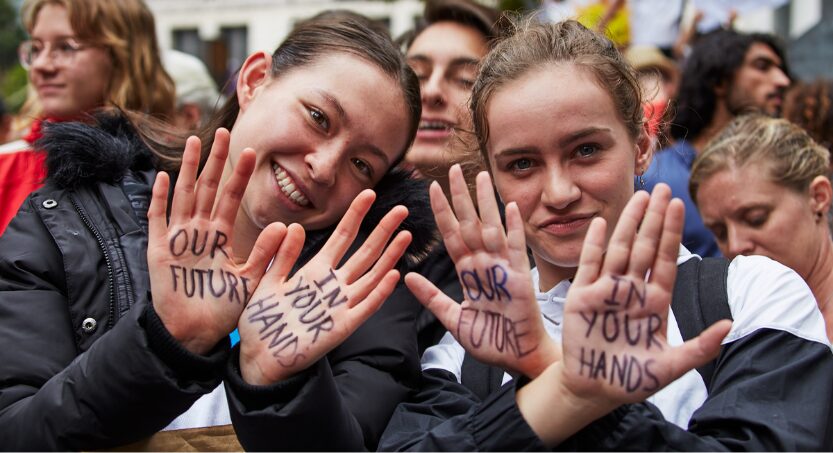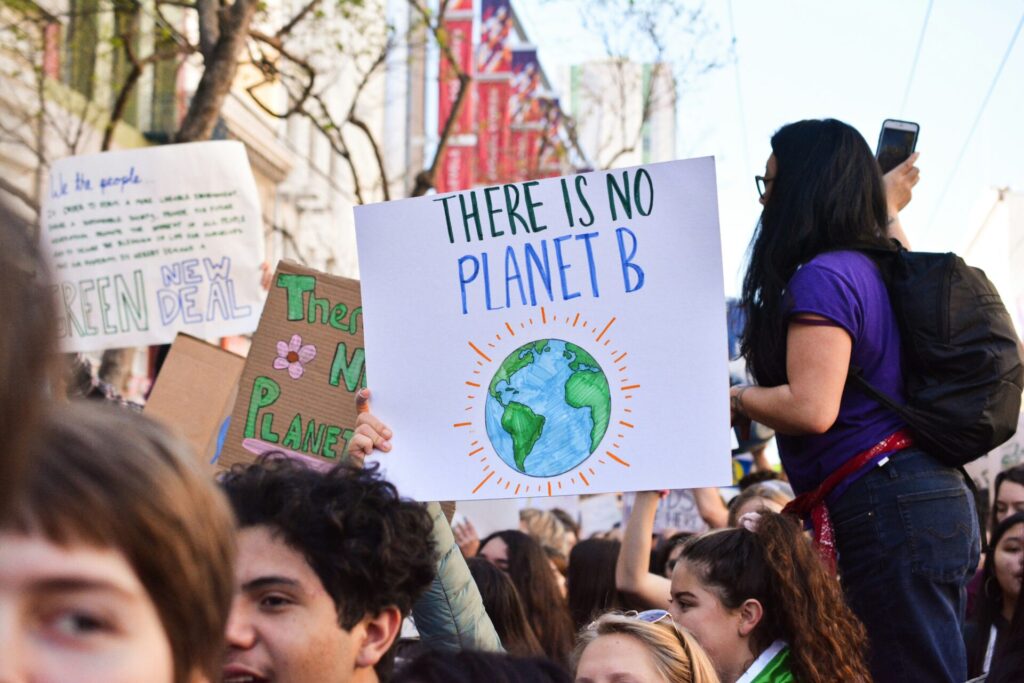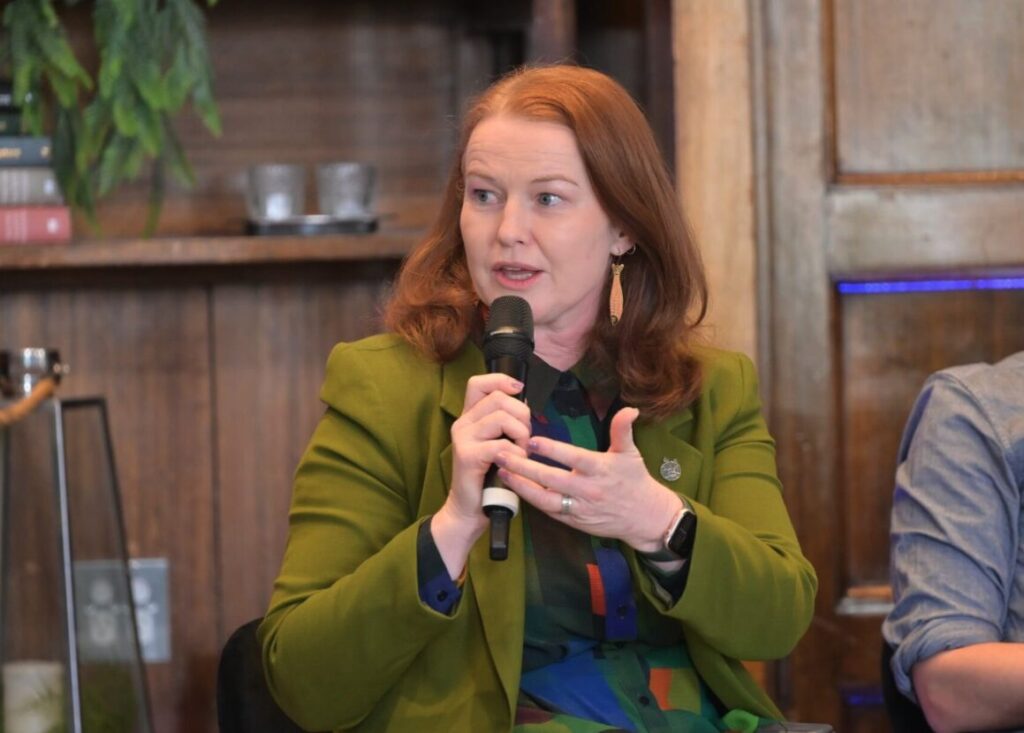Next-gen donors say environment is their top priority, AEGN report finds

More than 80% of next-generation donors identified the environment as their top funding priority and this is likely to jump to more than 90% in the next 10 years, according to a report released by the Australian Environmental Grantmakers Network (AEGN). The findings suggest a shift in the giving landscape as the intergenerational wealth transfer plays out.
AEGN CEO Claire O’Rourke commissioned the research because she was curious to see if next-gen giving is reflecting the concerns that younger cohorts are expressing about climate change and nature degradation.

“The report shows that people in this age group are thinking strategically about how they want to donate to causes and are selective about the issues they prioritise into the future. This is not a passing trend – it’s exciting and inspiring,” said Claire.
The $5.4 Trillion Question: How are Young Donors Reshaping Philanthropy report examines the interests, funding approaches and levels of philanthropic knowledge and engagement of Gen Y and Gen Z donors. The next two highest areas of focus for funding after 83% on environment were human rights (50%) and First Nations causes (46%).
Claire said she was surprised about the strategic approach next-gen donors appear to be taking. “They understand that when done inadequately, giving can reinforce the systems that they want to shift. It also shows that they have a sophisticated understanding of systems change.”
The study drew on existing findings and a new survey questioning 40 respondents as a “first look” at next generation giving by issue in Australia. The respondents said they favour funding foundations and capacity building (76%), legislative change (72%) and advocacy efforts (50%).
“Young people are coming of age in this era of profound social, environmental and economic change. As Philanthropy Australia has been articulating through its focus on the polycrisis at this year’s Philanthropy Leadership Summit, the next generation may already be there in the way they’re thinking about all those cascading and intersecting issues. They are responding with a matching complexity in their approach.”
A 2025 AEGN giving trends report showed less than 4% of philanthropic giving goes to environmental causes. “It looks like we are going to see a demographic shift,” said Claire. She said that respondents also showed a high preference for impact. “They won’t necessarily support a cause based on loyalty or family practice. Next-gen donors may be more likely to shift their support if they’re not seeing evidence of effectiveness.
“They also want to ensure that work aligns with their values, so organisations that want to engage Gen Y & Z donor cohorts need to be clear about their purpose and values, and be able to demonstrate effectiveness. They’ll need to have a strong digital presence too, because technology and online giving will continue to grow.”

The report also suggests that collective giving is popular with the cohort, particularly via mechanisms that make participation easier, such as peer-to-peer platforms, crowdfunding and giving circles.
John McLeod, Senior Research Consultant at JBWere Australia, said: “Even with cost-of-living pressures, the intergenerational wealth transfer means that a lot of financial influence will sit with the younger generation. Many charitable causes are thinking through what that will mean for them and some traditional charities may be fearful around what they need to do to engage the newer generation.
“The general trends in the report make sense with what we’re seeing. We don’t know how attitudes will change as cohorts age or wealth levels shift, but there’s no doubt that funding to environmental causes will grow because the issue is more demanding every year and the people inheriting money care about it more.
“But with current fundraising levels, it’s difficult to see other areas declining dramatically. Overall, the size of the funding pie is growing, so most other cause areas should maintain a good share.”
Lucy Steggles, Executive Officer of NEXUS Australia, said that although data hasn’t been gathered on numbers, climate and environmental causes are emerging as “the number one issue for next-gen and NEXUS members here and around the world”.
“It’s encouraging to see the level of strategic engagement the report highlights, too,” said Lucy. “We know that next-gen philanthropists who are engaged in giving with their families are thinking more progressively about funding overheads, unrestricted funding and systems change.”
Claire said that “so little is understood about the next-gen cohort, which is out of step with the scale of the $5.4tn wealth transfer. It’s incumbent on all of us in the sector to get a better understanding of this cohort – and more research will be useful.” She hopes the findings will interest philanthropists of all ages and that intergenerational conversations might evolve, allowing a family to come to a shared position about their giving that they’re proud of.
“The choices we make today will have a dramatic impact on 2050. The scientists I speak with are broadly hopeful about the future because they can see a pathway to avoiding the worst effects of climate change. Environmental degradation has a host of solutions on the table that have to be implemented and scaled.
“I spend half my time being enormously fearful about the future and the other half being excited. It’s a strange place to live. But the choice is ours.”
Read the full report on the AEGN website.
If you are involved in collective giving, we invite you to take in Philanthropy Australia’s survey to help us better understand how the field is growing.